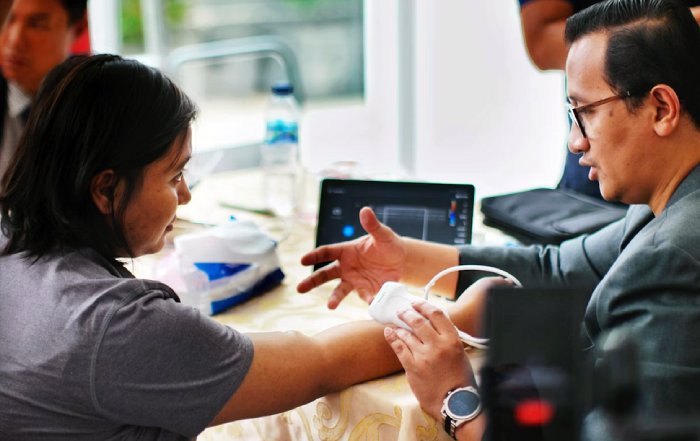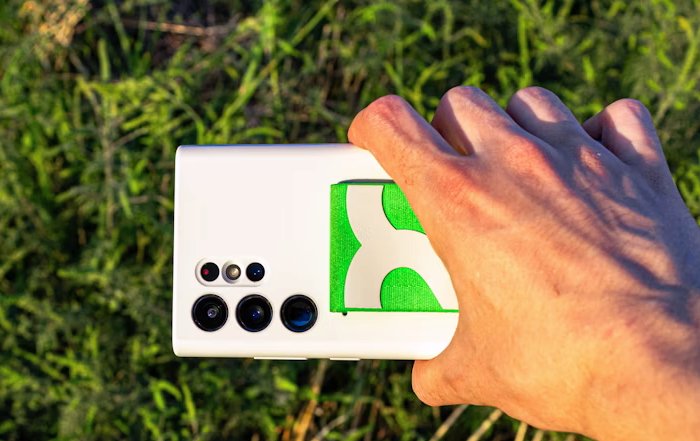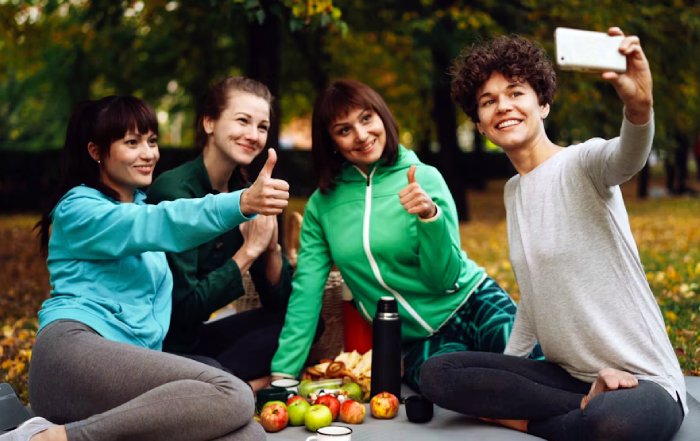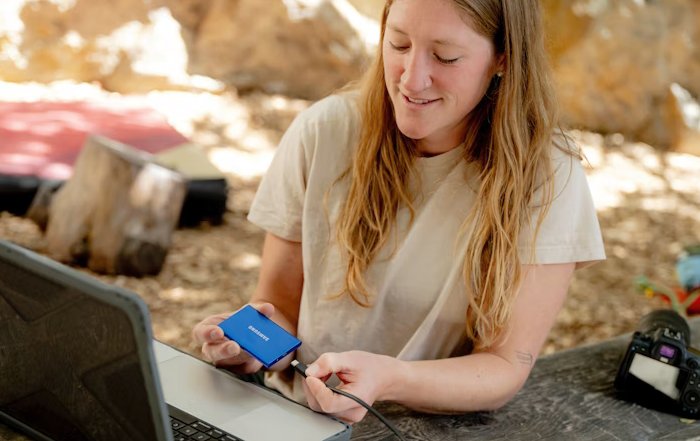In 2025, the intersection of technology, sustainability, and personal well-being has become one of the defining movements shaping global lifestyles. As climate anxiety and digital fatigue coexist with a renewed emphasis on health and mindfulness, a powerful new trend has emerged — eco-wellness. This evolving paradigm combines advancements in green technology with holistic self-care, giving rise to an ecosystem where personal health aligns with planetary health. Across the world, individuals are rethinking how they live, work, and heal, embracing solutions that promote balance between human biology and environmental sustainability.
On WellNewTime.com, the idea of eco-wellness is explored not merely as a trend but as a transformation of the way humanity defines comfort, beauty, and vitality in a rapidly changing world. Through innovations in clean energy, sustainable architecture, wearable technology, and ethical brands, eco-wellness now represents a convergence of modern science and ancient wisdom, reconnecting individuals with nature through the tools of the digital age.
The Rise of Eco-Wellness: Beyond Sustainability
Eco-wellness is more than adopting green habits or choosing eco-friendly beauty products. It’s a holistic lifestyle shift toward regenerative practices — those that restore rather than merely preserve. According to global research published by McKinsey & Company, over 70% of consumers today actively seek brands that demonstrate a commitment to environmental and social responsibility. This consumer awareness has accelerated innovation across industries, from biodegradable packaging in skincare to energy-efficient fitness equipment.
The wellness industry, valued at over $5.6 trillion according to The Global Wellness Institute, now integrates sustainability as a fundamental metric of quality and trust. Wellness tourism, home design, mental health, and personal care are all being redefined through eco-conscious principles. Learn more about this emerging connection between sustainability and well-being on WellNewTime’s wellness section.
Sustainable Architecture and Smart Wellness Spaces
In cities from Copenhagen to Singapore, green architecture has evolved from an aesthetic choice to a health necessity. Buildings now breathe — integrating natural light, ventilation, and biophilic design elements that reduce stress and improve productivity. The rise of smart homes powered by renewable energy, water recycling systems, and indoor plant ecosystems has turned urban apartments into personalized sanctuaries of well-being.
Companies such as Tesla Energy, Siemens Smart Infrastructure, and Google Nest are leading efforts to optimize energy efficiency while integrating AI systems that monitor air quality, temperature, and humidity to create healthier indoor environments. Meanwhile, eco-conscious developers are partnering with wellness experts to design spaces that reduce electromagnetic pollution, enhance circadian rhythms, and promote restorative sleep. Learn more about how design affects mental and physical health in WellNewTime’s lifestyle section.
Green Fitness: Where Technology Meets Movement
Fitness, traditionally associated with physical endurance and aesthetics, has now embraced environmental mindfulness. In 2025, the concept of green gyms is gaining momentum across Europe, North America, and Asia. These facilities generate their own electricity through human-powered equipment, reuse water efficiently, and feature natural materials to reduce chemical exposure.
Brands like Terra Hale in London and Green Microgym in Portland pioneered this model, demonstrating that exercise can generate power as well as vitality. Digital fitness platforms have followed suit, encouraging eco-friendly workouts through sustainability challenges and low-carbon activity tracking. Wearables such as Fitbit, Garmin, and Oura Ring now offer features that measure environmental factors like air quality and UV exposure, merging digital health insights with ecological awareness. Explore more insights on sustainable exercise innovations through WellNewTime’s fitness coverage.
The Role of AI and Biotechnology in Personal Sustainability
Artificial Intelligence and biotechnology are playing crucial roles in the eco-wellness revolution. From personalized nutrition plans based on DNA analysis to AI-driven mindfulness programs that optimize cognitive resilience, technology now serves as a bridge between precision health and environmental stewardship.
Startups like Nutrigenomix, WHOOP, and Viome are harnessing machine learning to provide insights into how diet and environment interact with human biology. Meanwhile, biotech innovators are creating sustainable alternatives to traditional ingredients used in skincare and supplements, replacing synthetic compounds with lab-grown natural actives. These innovations reduce the ecological footprint of wellness products while enhancing their effectiveness.
Such developments are redefining the ethics of personal care. The focus is no longer just on what individuals put into their bodies, but also on how these choices impact global ecosystems. Discover more about this transformative relationship between AI, biotech, and health on WellNewTime’s health page.
Clean Beauty and Green Ingredients: A New Standard of Purity
Clean beauty has transitioned from a niche trend to an industry imperative. Modern consumers, especially in the United States, United Kingdom, and Australia, are increasingly aware of the environmental and ethical implications behind the cosmetics they use. This has pushed leading companies like L’Oréal, The Estée Lauder Companies, and Unilever to embrace transparency in sourcing, manufacturing, and packaging.
Brands such as Aveda, Herbivore Botanicals, and Dr. Hauschka have built their reputation around plant-based formulas, minimal waste, and cruelty-free practices. Furthermore, the integration of refill systems and biodegradable containers has significantly reduced waste across the beauty sector. Learn how eco-conscious skincare is redefining luxury in WellNewTime’s beauty section and explore The Good Face Project for ingredient transparency.
The next evolution of clean beauty involves circular production models — reusing raw materials, repurposing by-products, and embracing waterless formulations. This shift has also encouraged collaboration with sustainable tech companies to track carbon emissions throughout supply chains, setting a new gold standard for ethical innovation.
🌍 The Evolution of Eco-Wellness
From Sustainability Trends to Global Transformation (2025-2030)
🌱
2025 - PresentEco-Wellness Emerges
Integration of green technology with holistic self-care creates a new paradigm combining personal and planetary health.
🏢
2025Smart Wellness Spaces
Buildings breathe with biophilic design, AI-monitored air quality, and renewable energy systems transforming urban apartments into sanctuaries.
💪
2025Green Fitness Revolution
Human-powered gyms generate electricity while wearables track environmental factors like air quality and UV exposure.
🧬
2025AI & Biotech Integration
Personalized nutrition from DNA analysis and lab-grown natural actives reduce ecological footprint while enhancing effectiveness.
✈️
2025Regenerative Tourism
Solar-powered resorts and permaculture retreats redefine luxury hospitality with minimal environmental disruption.
🏙️
2025-2027Urban Eco-Systems
Green rooftops, vertical forests, and clean-air zones transform cities into livable wellness ecosystems.
🔄
2027-2029Circular Wellness Economy
Refillable packaging, biodegradable materials, and waste-to-resource models reshape manufacturing and consumption.
🌟
2030$1.3 Trillion Market
Eco-wellness market surpasses projections as regenerative practices become the foundation of global wellness economy.
Eco-Wellness Tourism: Regeneration Through Travel
The post-pandemic travel resurgence has given birth to eco-wellness tourism, a movement combining rejuvenation with environmental responsibility. Destinations across Europe, Asia, and South America are reinventing tourism to focus on regeneration — both personal and planetary.
Resorts powered by solar energy, wellness retreats surrounded by permaculture gardens, and oceanfront sanctuaries designed for minimal environmental disruption are redefining luxury hospitality. Notable examples include Six Senses, Soneva Fushi, and The Datai Langkawi, each integrating sustainability with world-class wellness offerings.
In Costa Rica and Bali, retreats now incorporate meditation programs that emphasize environmental gratitude, teaching guests to care for their minds and the Earth simultaneously. This approach has made eco-wellness travel a cornerstone of the global hospitality sector, contributing not only to individual healing but also to the preservation of fragile ecosystems. Learn about the latest eco-luxury trends in WellNewTime’s travel section.
Corporate Wellness and Green Workspaces
Corporate responsibility now extends beyond carbon neutrality into the well-being of employees. Eco-wellness in the workplace is emerging as a strategic priority among multinational firms in North America, Europe, and Asia. Offices designed with green infrastructure — including energy-efficient lighting, natural ventilation, and mindfulness zones — are proving to increase employee satisfaction and reduce burnout.
Organizations like Microsoft, Salesforce, and Patagonia have integrated sustainability into employee well-being programs, offering incentives for green commuting, plant-based diets, and community gardening. Moreover, virtual wellness platforms are helping remote teams cultivate mindfulness and physical health while lowering their digital carbon footprint.
Companies recognize that environmental stewardship directly enhances brand loyalty and productivity. As more corporations report ESG (Environmental, Social, and Governance) performance metrics, wellness becomes intertwined with sustainability. Explore how businesses are aligning these goals on WellNewTime’s business page.
Innovations Driving the Future of Eco-Wellness
The Evolution of Smart Self-Care Devices
As technology continues to merge with self-care, smart devices are transforming the way people monitor their health and minimize environmental impact. Modern wearables now go beyond tracking heart rate and sleep patterns. They measure hydration levels, monitor air pollution exposure, and recommend adaptive wellness routines based on environmental data.
Devices such as Apple Watch Series 10 and Oura Ring Horizon integrate green computing principles, utilizing recyclable materials, longer battery life, and minimal electronic waste. Samsung’s Galaxy Ring, introduced in 2025, has taken sustainability further by offering modular components that can be replaced individually rather than discarding the entire device. These innovations highlight a growing movement within the tech industry toward eco-efficient design and ethical sourcing of minerals.
Beyond wearables, smart mirrors, AI-driven skincare analyzers, and home air purification systems are enhancing personal environments while reducing ecological impact. Such integration represents a new frontier in health technology, where efficiency and environmental consciousness coexist. Learn more about how technology supports mindful living on WellNewTime’s innovation section.
The Rise of Digital Detox and Eco-Mindfulness
In an era dominated by constant connectivity, the need for digital detox has become an essential part of eco-wellness. The endless influx of information, notifications, and screen exposure not only affects mental health but also contributes to energy consumption and e-waste through rapid device turnover.
Global wellness experts now advocate for balanced digital lifestyles that prioritize mental clarity and planetary responsibility. Mindfulness platforms such as Headspace, Calm, and Insight Timer have expanded their programs to include eco-conscious meditations that teach environmental empathy and sustainable awareness. Retreats in countries like Sweden, Japan, and Costa Rica are offering “offline weekends,” where participants reconnect with nature and practice mindfulness without digital interference.
By aligning inner calm with ecological awareness, the digital detox movement creates a link between mental wellness and global sustainability — reinforcing the idea that caring for one’s mind is inseparable from caring for the Earth. Explore related insights in WellNewTime’s mindfulness section.
Sustainable Nutrition: The Food of the Future
Nutrition has always been central to wellness, but in 2025, food is also viewed through the lens of environmental responsibility. Sustainable nutrition emphasizes plant-based diets, regenerative agriculture, and locally sourced ingredients to reduce carbon emissions and improve soil health.
Companies like Beyond Meat, Impossible Foods, and Oatly continue to lead the plant-based revolution, while innovators such as Solar Foods and Perfect Day are developing alternative protein sources using air, fermentation, and lab-based precision biology. These methods significantly reduce land and water use while maintaining nutritional value.
Restaurants and wellness cafés in cities like Berlin, Los Angeles, and Singapore now combine gastronomy with sustainability, serving dishes crafted from zero-waste principles and local produce. This approach aligns with growing consumer demand for ethical and healthy dining experiences. Learn more about the connection between food and wellness on WellNewTime’s health section.
Water Conservation and Hydrotherapy Reimagined
Water remains one of the planet’s most precious resources, yet it is also central to countless wellness rituals — from spa treatments to daily self-care. The challenge of 2025 is to balance luxury and sustainability through innovation in water management.
Modern spas and resorts are turning to closed-loop hydro systems, greywater recycling, and low-flow technologies to reduce waste without compromising guest experience. Companies such as Kohler, Grohe, and TOTO have launched intelligent water systems that track usage and optimize flow in real time.
Hydrotherapy itself has evolved beyond the physical; it is now an experience designed to reconnect individuals to the natural element while honoring its scarcity. Thermal baths in Iceland and Japan’s onsen towns are introducing educational components on water conservation, blending cultural heritage with modern sustainability. Discover more about sustainable spa innovations in WellNewTime’s massage and wellness coverage.
Sustainable Fashion and Eco-Luxury in Wellness Culture
Fashion and self-expression remain integral to the broader wellness identity. However, the fashion industry has long been one of the largest polluters, prompting a wave of eco-conscious transformation. In 2025, sustainable fashion and eco-luxury redefine beauty and comfort, merging aesthetics with accountability.
Brands like Stella McCartney, Patagonia, and Allbirds lead by example, employing recycled fibers, biodegradable materials, and transparent supply chains. Wellness apparel — including yoga wear, loungewear, and sports fashion — is now designed for durability and circularity rather than fast consumption.
New technologies such as biofabricated textiles, 3D-printed materials, and natural dye innovations have made sustainable fashion both sophisticated and accessible. Luxury houses including Gucci, Prada, and Burberry have introduced carbon-neutral collections, demonstrating that high-end fashion can coexist with ecological ethics. Explore more about evolving wellness aesthetics on WellNewTime’s brands section.
The Social Impact of Eco-Wellness Communities
One of the most transformative aspects of the eco-wellness movement is the creation of global communities centered on shared values. Co-living and co-working spaces in eco-villages are emerging across Europe, Asia, and South America, integrating permaculture, clean energy, and wellness-oriented architecture.
Projects such as The Green Village in Bali, Findhorn Ecovillage in Scotland, and Masdar City in the UAE illustrate how sustainable urban models can nurture both community well-being and environmental responsibility. These spaces combine social connection, mental balance, and ecological design — forming prototypes for the cities of the future.
Moreover, the rise of digital platforms dedicated to eco-wellness networking enables global collaboration. Initiatives by UNEP (United Nations Environment Programme) and World Economic Forum support partnerships between governments, NGOs, and the private sector to accelerate wellness innovation through sustainable policy and green investment. Discover inspiring stories shaping the wellness world on WellNewTime’s world page.
The Economic and Environmental Potential of Eco-Wellness
The Market Growth of Sustainable Wellness
The global wellness economy is expanding rapidly, but its most transformative growth area lies within sustainable wellness. According to projections from The Global Wellness Institute, the eco-wellness market will surpass $1.3 trillion by 2030, driven by consumer demand for transparency, ethical sourcing, and low-impact living. This shift demonstrates that sustainability is no longer a niche concern—it is an expectation integrated into every wellness-related purchase and experience.
Venture capital funding for green technology startups has also surged, particularly in wellness-adjacent sectors like clean energy, sustainable packaging, and ethical fashion. In 2025, a growing number of investors are prioritizing ESG-aligned (Environmental, Social, Governance) ventures, understanding that ecological innovation yields both profitability and long-term stability. The convergence of wellness and sustainability is therefore not just a moral or aesthetic movement—it is a cornerstone of the emerging green economy.
Countries like Germany, Sweden, and Singapore are leading with national initiatives that incentivize sustainable health and wellness enterprises. Learn more about the global business transformation toward sustainability in WellNewTime’s business coverage.
Corporate and Institutional Responsibility
As sustainability becomes a defining measure of business credibility, corporations are redefining wellness policies to reflect eco-conscious principles. Leading global firms such as Unilever, Google, Apple, and Patagonia have expanded their climate strategies to include personal wellness benefits for employees that promote environmental mindfulness—such as carbon offset programs, remote work policies that reduce commuting emissions, and partnerships with eco-friendly fitness and nutrition providers.
Financial institutions are also contributing to this transformation by offering green bonds and sustainability-linked loans that incentivize companies to achieve measurable wellness and environmental goals. For instance, HSBC, DBS Bank, and BNP Paribas have introduced financing mechanisms directly tied to corporate well-being metrics, recognizing that healthier employees create more resilient organizations.
The long-term outcome of this trend is a global network of companies embedding wellness and sustainability into their brand DNA, fostering both employee well-being and environmental regeneration. Learn more about evolving global trends in corporate responsibility on WellNewTime’s news page.
Eco-Wellness in Urban Living
Cities have historically been associated with pollution, congestion, and stress, but urban environments are now evolving into eco-wellness ecosystems. From London’s Ultra Low Emission Zone to Singapore’s Green Plan 2030, municipalities worldwide are integrating health and sustainability policies to create more livable urban spaces.
Green rooftops, community gardens, and vertical forests are transforming skylines and improving air quality. Urban wellness centers are combining renewable energy with mindfulness programs, allowing city dwellers to restore mental balance while contributing to environmental well-being. In cities like Seoul, Amsterdam, and Toronto, bike-sharing programs, electric public transport, and clean-air zones are redefining how people move, breathe, and connect with their surroundings.
These urban transformations signal a larger societal shift—one that prioritizes environmental harmony as the foundation of public health. Explore how wellness integrates with sustainable cities in WellNewTime’s environment coverage.
The Role of Education and Awareness
Education plays a central role in sustaining the eco-wellness movement. Schools, universities, and community organizations worldwide are integrating environmental literacy into health education, teaching younger generations the value of balance between technological advancement and natural preservation.
Institutions like Harvard School of Public Health, University College London, and National University of Singapore are pioneering interdisciplinary programs that combine public health, sustainability science, and digital innovation. These initiatives prepare future leaders to create policies and technologies that prioritize ecological resilience and human flourishing simultaneously.
Online education platforms are also contributing to the democratization of wellness knowledge. Through accessible courses and digital workshops, individuals can now learn sustainable cooking, home energy optimization, and mindfulness techniques that align with green values. Learn how awareness campaigns shape healthier societies through WellNewTime’s wellness section.
The Psychological Connection: Planetary and Personal Healing
Psychologists and behavioral scientists increasingly highlight the connection between environmental degradation and mental distress. Eco-anxiety, a term describing chronic fear of environmental doom, has become common among younger generations. However, studies show that participating in sustainable practices—such as tree planting, recycling, or reducing carbon consumption—can significantly reduce stress and increase feelings of empowerment.
Eco-wellness provides a therapeutic framework where caring for the planet doubles as self-care. Spending time in nature, practicing mindfulness in green spaces, and choosing sustainable consumption patterns can improve dopamine regulation, reduce cortisol levels, and enhance cognitive clarity.
This synergy between emotional well-being and environmental awareness forms a feedback loop: healthier individuals are more motivated to protect the Earth, and a healthier planet fosters a calmer, more balanced humanity. For related insights, see WellNewTime’s mindfulness coverage.
Technology, Innovation, and the Circular Future of Wellness
Renewable Energy and Wellness Infrastructure
Renewable energy technologies are revolutionizing the wellness sector, powering everything from eco-spas to meditation apps. Resorts across Europe and Asia now run entirely on solar, wind, or geothermal energy, significantly lowering operational emissions.
For instance, Six Senses Bhutan and Whitepod Eco-Luxury Hotel in Switzerland operate carbon-neutral properties while maintaining world-class wellness amenities. Urban wellness centers in New York and Berlin are also integrating solar façades and smart energy grids to balance usage during peak hours.
Moreover, smaller wellness businesses are adopting micro-renewable solutions like rooftop solar panels, green hydrogen systems, and water reclamation units to achieve self-sufficiency. These models not only reduce costs but also enhance brand credibility among eco-conscious consumers.
To explore how sustainability fuels modern wellness infrastructure, visit WellNewTime’s environment section.
The Circular Economy of Wellness Products
The circular economy has become the blueprint for the future of eco-wellness manufacturing. Rather than following a linear “make-use-dispose” model, companies are designing products with full life-cycle awareness—where waste becomes a resource.
Wellness brands like The Body Shop, Lush, and Davines have implemented refillable packaging systems, while Loop and TerraCycle provide infrastructure for reusing containers across brands. Meanwhile, innovations in biodegradable materials and recyclable electronics are reshaping the landscape of personal health devices.
This new approach is not only reducing pollution but also reshaping consumer habits, fostering long-term relationships between brands and users based on trust, accountability, and shared values. Learn how global companies are embracing responsible innovation on WellNewTime’s brands page.
The Future of Green Biotechnology
Biotechnology is among the most promising fields driving eco-wellness forward. Scientists are engineering bioactive materials derived from algae, mushrooms, and seaweed that can replace petrochemical-based ingredients in skincare, supplements, and medical textiles.
Startups such as Bolt Threads and Algiknit are leading innovations in sustainable biomaterials, while companies like Amyris are pioneering bio-fermented actives that eliminate the need for traditional agriculture-based extraction. These advancements drastically cut down on land use and carbon emissions while improving product efficacy.
In parallel, the field of precision health—which uses AI and genomic data to tailor nutrition and wellness interventions—aligns with the broader vision of personalized sustainability. By understanding the unique biological and environmental needs of individuals, future health systems will be capable of prescribing wellness routines that minimize both waste and harm.
Learn more about emerging biotechnological trends influencing wellness innovation in WellNewTime’s innovation coverage.
The Global Transformation Toward an Eco-Wellness Society
The Rise of Regenerative Wellness Economies
The wellness industry is no longer content with simply minimizing harm—it is now embracing the concept of regeneration. Regenerative wellness extends beyond sustainability by focusing on restoring ecosystems, revitalizing communities, and repairing human relationships with nature. This vision is reshaping both rural and urban economies across the world.
In Costa Rica, regenerative resorts partner with local farmers to create closed-loop food systems. In Sweden, forest therapy initiatives combine reforestation with mental health recovery programs. In Japan, “satoyama” restoration projects reconnect people with ancestral lands through mindful agriculture and forest bathing. These examples illustrate how wellness practices can actively heal the environment while supporting livelihoods.
The idea is gaining traction within international organizations such as The World Health Organization (WHO) and The United Nations Environment Programme (UNEP), which now advocate for integrated health and ecological resilience models. Through cross-sector collaboration, countries are redefining wellness as a collective responsibility rather than an individual luxury. Learn how global wellness frameworks evolve through WellNewTime’s world section.
The Integration of Wellness into Public Policy
Governments around the world are beginning to institutionalize wellness within public policy. The European Union’s Green Deal, Canada’s Clean Growth Strategy, and Singapore’s Green Plan 2030 all prioritize environmental health alongside human wellness. These programs fund renewable energy adoption, green public spaces, sustainable transport, and air quality initiatives—all directly linked to improved physical and mental well-being.
In the United States, municipalities such as Austin and Seattle are launching wellness-centered urban planning models that include bike lanes, pedestrian networks, and community wellness gardens. In Asia, countries like South Korea and Thailand are integrating sustainable wellness tourism into national growth strategies, supporting local communities while reducing ecological footprints.
This integration of health and environmental policy represents a major shift in governance. By measuring progress through wellness indicators rather than just economic output, nations are adopting more humane and balanced definitions of success. Learn about similar developments in WellNewTime’s news section.
Artificial Intelligence and Predictive Eco-Health
The future of eco-wellness will also be powered by artificial intelligence. As AI technologies evolve, they are being used to track environmental factors such as pollution levels, pollen counts, and temperature variations, correlating these with individual health data to predict wellness outcomes.
AI-driven platforms like ClimaCell, IBM Environmental Intelligence Suite, and Google’s DeepMind Health are already pioneering predictive eco-health models that allow individuals and governments to anticipate the effects of environmental change on public wellness. Imagine a world where your digital health assistant adjusts your nutrition or exercise routine in real time based on shifting environmental conditions—such innovations are no longer science fiction but active prototypes in 2025.
This fusion of environmental data and personalized wellness marks a critical milestone in human development: the age of proactive health management, where sustainability and self-care coexist in perfect alignment.
The New Ethical Consumer
The eco-wellness revolution has also given rise to a new type of consumer—one driven by ethics, transparency, and long-term thinking. This generation, spanning Millennials to Gen Z and even increasingly older demographics, prioritizes authenticity over branding. They expect companies to demonstrate measurable environmental and social impact before earning their trust.
Brands like Patagonia, Ritual, and Evolve Together have successfully aligned with this ethos, integrating storytelling with sustainability. Social media platforms amplify these narratives, transforming conscious consumption into a cultural movement. Consumers now share product life cycles, certifications, and sustainability scores as badges of identity, encouraging accountability across global supply chains.
For wellness brands, this means the pathway to success lies not in traditional marketing but in transparency, empathy, and shared purpose. Learn more about how brands are reshaping identity in WellNewTime’s brands coverage.
The Convergence of Ancient Wisdom and Modern Innovation
The eco-wellness movement does not reject technology—it harmonizes it with ancient practices. Across Asia, Ayurveda, Traditional Chinese Medicine, and Japanese Kampo are being reinterpreted through data analytics and biotechnology, revealing measurable links between ancient wisdom and modern science.
Harvard Medical School’s collaborations on meditation neuroscience and Stanford University’s studies on forest therapy exemplify how tradition and innovation can strengthen each other. By combining data precision with ancestral knowledge, wellness professionals are unlocking new frontiers in preventive health and emotional balance.
This synthesis of old and new is especially visible in wellness retreats that integrate traditional rituals with clean technology—offering digital detox programs powered by renewable energy, herbal treatments sourced from regenerative farms, and virtual reality meditations that simulate pristine natural environments. The result is a redefinition of wellness that is timeless yet technologically advanced. Learn more about such experiences in WellNewTime’s wellness section.
Community Resilience and the Future Workforce
Eco-wellness is not just personal—it is communal. The growing emphasis on shared health, collective responsibility, and environmental interdependence is reshaping how communities and organizations operate.
In workplaces, corporate wellness programs now focus on emotional intelligence, hybrid work-life balance, and nature-based retreats to combat burnout. Companies are building green campuses that foster both productivity and mindfulness. Meanwhile, educational institutions are preparing students for eco-career paths, including sustainability consulting, green engineering, wellness coaching, and environmental psychology.
This convergence of wellness and the job market demonstrates that personal growth and career success are no longer separate pursuits. Professionals who embody resilience, empathy, and ecological awareness are becoming the new leaders of tomorrow. For insights on the future of work and wellness, explore WellNewTime’s jobs section.
Challenges and Ethical Considerations
Despite its promise, the eco-wellness movement faces significant challenges. Greenwashing remains a major concern, with companies exaggerating sustainability claims to attract conscious consumers. The proliferation of unverified “eco” certifications can confuse consumers and dilute genuine progress.
Additionally, access to eco-wellness remains unequal across regions. While advanced economies in Europe and Asia lead innovation, many developing nations still struggle with basic healthcare access and environmental degradation. Bridging this gap requires global collaboration—where corporations, governments, and consumers share responsibility for building a more inclusive and sustainable wellness culture.
There is also a growing conversation about digital ethics—as AI-driven wellness systems gather more personal data, ensuring privacy and equity will be essential. The challenge for the next decade will be to ensure that eco-wellness empowers individuals rather than surveils them.
Looking Ahead: A Blueprint for a Balanced Future
As humanity stands at the crossroads of technological advancement and ecological crisis, eco-wellness offers a vision of harmony. It demonstrates that progress does not have to come at the expense of the planet and that personal health cannot thrive in a world out of balance.
The integration of green technology, sustainable design, ethical business, and mindful living represents a profound redefinition of success—one measured not in profit or consumption, but in well-being, resilience, and restoration.
From AI-powered smart homes that breathe clean air to regenerative communities that heal ecosystems, the eco-wellness era is shaping a future where every breath, meal, and movement contributes to planetary renewal.
This is not merely a trend—it is the next chapter in human evolution. It is where self-care becomes world care, and where WellNewTime.com continues to lead the dialogue for a healthier, more sustainable tomorrow.










